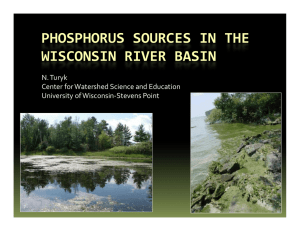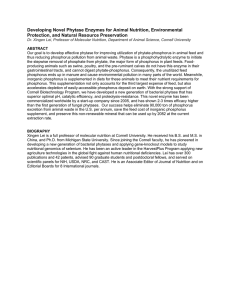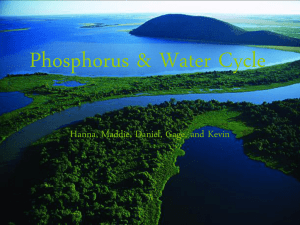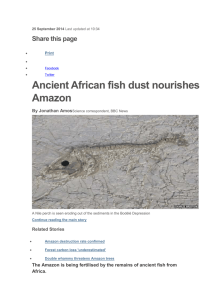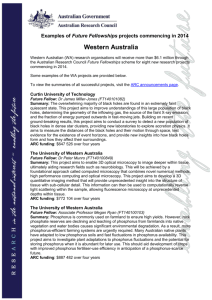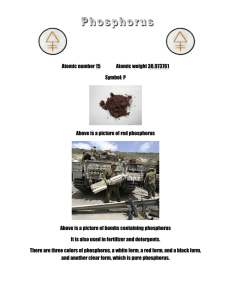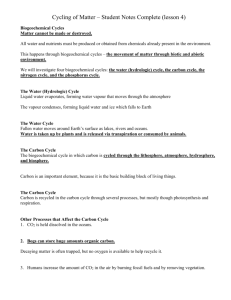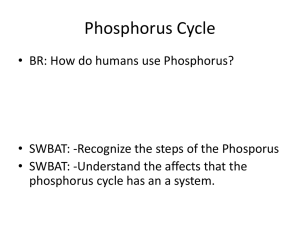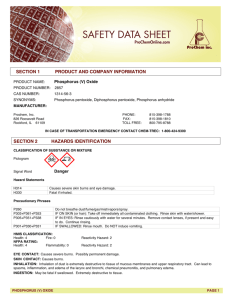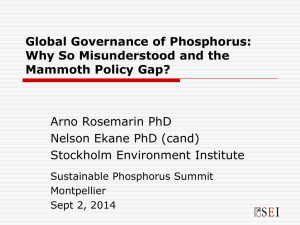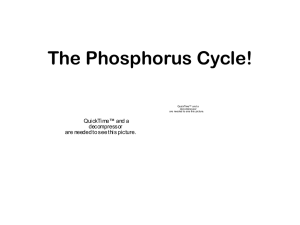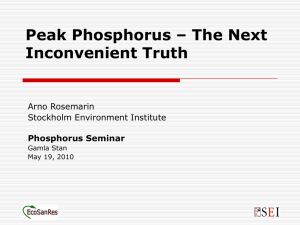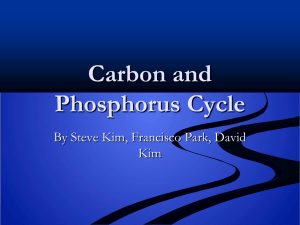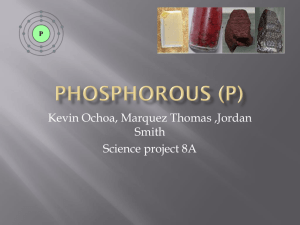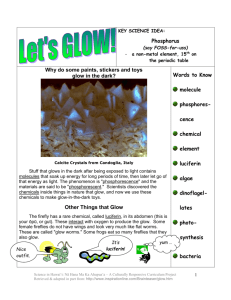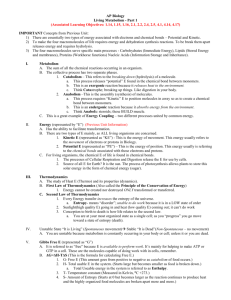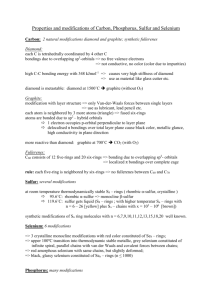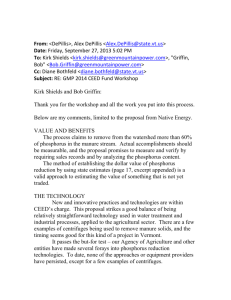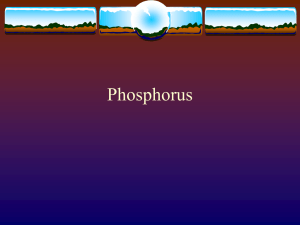Phosphorus Cycle
advertisement
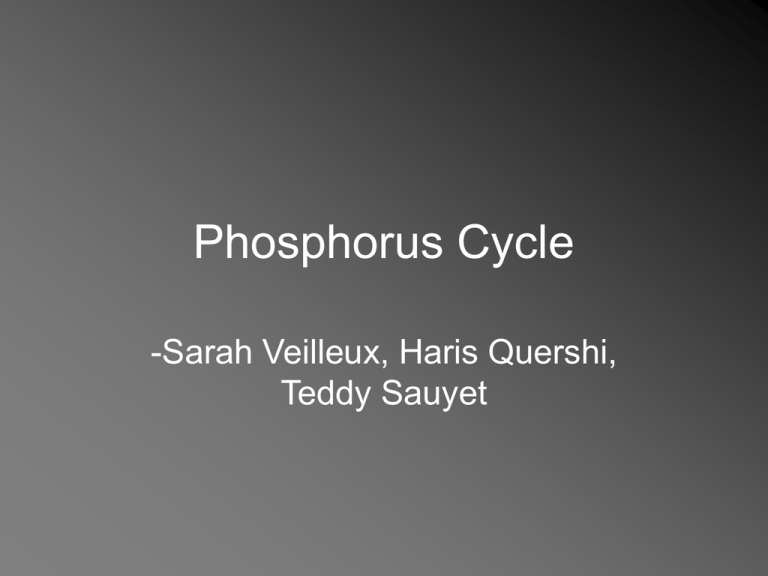
Phosphorus Cycle -Sarah Veilleux, Haris Quershi, Teddy Sauyet We’ll start with the beginning • It starts with the rocks, the sedimentary ones. They have the phosphorus, in a form called apatite, which also goes by its alter ego, Ca5(PO4)3OH. *Note The sedimentary rocks merely add phosphorus to the cycle, they are not actually part of the cycle. Ignoring that… • The sedimentary rocks will then weather down from storms and such which move the apatite into the soil. Now for the fun part.. • The plants then use the phosphorus in their reproductive structures, such as DNA and RNA. So what if there is a lot of phosphorus? • • • • OVERGROWTH. Lets say it again. OVERGROWTH. Not just above the ground, their roots will also grow large! This is why many fertilizers today use phosphorus. Then animals, like us, eat the plants! • And the phosphorus goes through the food chain, which we will not bother to reteach you. (Now if you do not know this, this would be a great time to raise your hand). The animals then produce scat. • Which goes back into the cycle, starting with the soil!! Ta da!! • (Censored because its impossible to find an appropriate picture googling “scat” However.. • Sometimes, due to run off, phosphorus enters areas of water!!! What happens now??? Well, it's not that exciting... • It just sort of goes through the marine food chain. BUT • It might eventually settle to the bottom, where it becomes trapped in layers of sedimentary rock!! For 100 THOUSAND Years!! • Or until it is brought back to the surface by geologic forces. Long long time.

